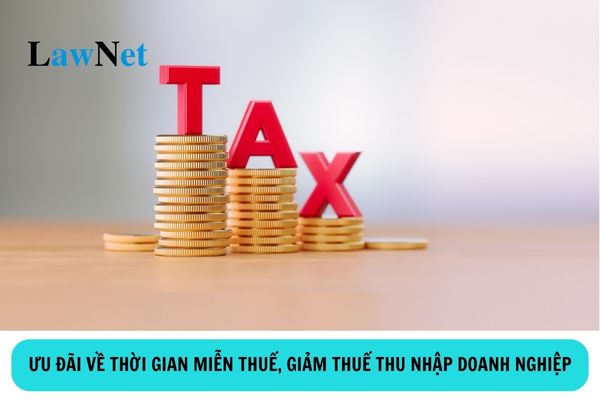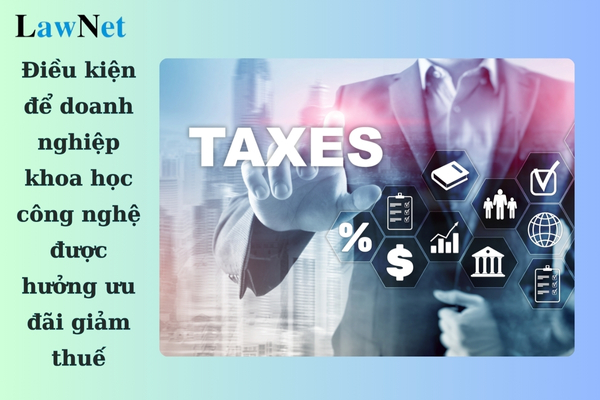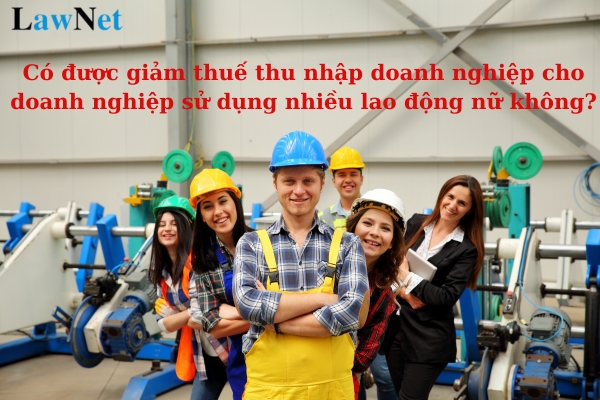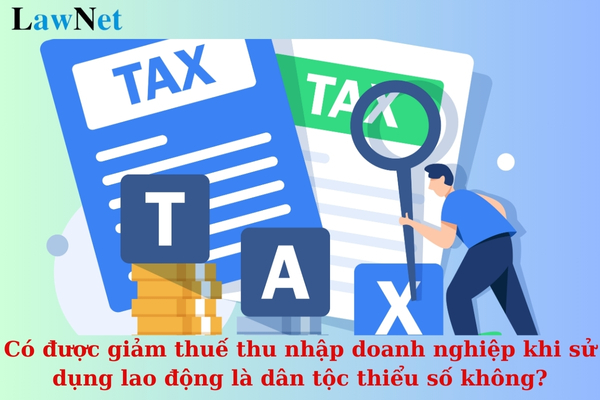What are the regulations on CIT exemption and reduction periods in Vietnam?
What are the regulations on CIT exemption and reduction periods in Vietnam?
Under Article 14 of the Law on CIT 2008 amended and supplemented by Clause 8 of Article 1 of the Law on Amendment to Law on CIT 2013 and Point b Clause 4 Article 75 of the Investment Law 2020, regulations on CIT exemption and reduction periods are as follows:
- Income from enterprises implementing new investment projects stipulated in Clause 1, Point a Clause 2 of Article 13 of the Law on CIT 2008 and income of hi-tech enterprises, hi-tech agricultural enterprises are eligible for tax exemption for up to 4 years, and eligible for 50% tax reduction for up to 9 more years.
For investment projects specified in Clause 2, Article 20 of the Investment Law 2020, the Prime Minister of Vietnam will decide on the application of tax exemption for a maximum of six years and a 50% reduction of the payable tax amount for a maximum of thirteen years thereafter.
- Income from enterprises implementing new investment projects specified in Clause 3, Article 13 of the Law on CIT 2008 and income from enterprises implementing new investment projects in industrial zones, except for industrial zones located in areas with advantageous socio-economic conditions as per regulation, will be exempt from tax for a maximum of two years and will receive a 50% reduction in the payable tax amount for a maximum of the following four years.
- The tax exemption and reduction period for income of enterprises implementing new investment projects stipulated in Clauses 1 and 2, Article 14 of the Law on CIT 2008 will start from the first year of taxable income generated from the project. In cases where there is no taxable income in the first three years, from the first year generating revenue, the tax exemption, and reduction period will be calculated from the fourth year.
The tax exemption and reduction period for high-tech enterprises and enterprises applying high technology in agriculture as stipulated in Point c, Clause 1, Article 13 of the Law on CIT 2008 will start from the date of issuing the certification as a high-tech enterprise or enterprise applying high technology in agriculture.
- Enterprises with investment projects for the development of ongoing investment projects in fields and locations eligible for CIT incentives as stipulated in the Law on CIT 2008 that expand production scale, increase capacity, innovate production technology (expanded investment) if meeting one of the three criteria stipulated in Clause 4, Article 14 of the Law on CIT 2008 may choose to enjoy tax incentives according to the ongoing project for the remaining duration (if any) or be exempt from tax, and get a reduction for additional income generated from the expanded investment.
The exemption and reduction period for additional income from expanded investment stipulated in Clause 4, Article 14 of the Law on CIT 2008 is equivalent to the tax exemption and reduction period applied to new investment projects in the same area and field eligible for CIT incentives.
Investment expansion projects eligible for incentives stipulated in Clause 4, Article 14 of the Law on CIT 2008 must meet one of the following criteria:
+ The additional cost of fixed assets when the investment project is completed and operational must be at least twenty billion VND for expanded investment projects in fields eligible for CIT incentives as regulated by the Law on CIT 2008 or at least ten billion VND for expanded investment projects implemented in areas with difficult or extremely difficult socio-economic conditions as per legislation;
+ The proportion of increased fixed asset costs must be at least 20% compared to the total cost of fixed assets before investment;
+ The additional designed capacity must be at least 20% compared to the designed capacity before investment.
If operating enterprises have expanded investments in fields and areas eligible for tax incentives as regulated by the Law on CIT 2008 but do not meet one of the three criteria stipulated in Clause 4, Article 14 of the Law on CIT 2008, tax incentives will be applied according to the ongoing project for the remaining period (if any).
If an enterprise enjoys tax incentives for expanded investment, the additional income from expanded investment must be separately accounted for. If separate accounting is not possible, the income from expanded investment will be determined according to the ratio between the new cost of fixed assets put into production, and business compared to the total cost of fixed assets of the enterprise.
The tax exemption and reduction period stipulated in Clause 4, Article 14 of the Law on CIT 2008 will be calculated from the year the investment project is completed and put into production and business.
Tax incentives stipulated in Clause 4, Article 14 of the Law on CIT 2008 will not apply to cases of expanded investment due to mergers, acquisitions of enterprises, or ongoing investment projects.

What are the regulations on CIT exemption and reduction periods in Vietnam? (Image from the Internet)
What income is exempt from CIT in Vietnam?
According to Article 4 of the Law on CIT 2008 as amended and supplemented by Clause 3 of Article 1 of the Law on Amendment to Law on CIT 2013 (and further amended by Clause 1 of Article 119 of the Law on Medical Examination and Treatment 2023 and Clause 2 of Article 1 of the Law on Amendments to Tax Laws 2014), the income exempt from CIT includes:
- Income from crop planting, husbandry, aquaculture, processing of agricultural and seafood products, and salt production by cooperatives; income of cooperatives operating in the agriculture, forestry, fishery, and salt industries in areas with difficult socio-economic conditions or in areas with particularly difficult socio-economic conditions; income of enterprises from crop planting, husbandry, aquaculture, processing of agricultural and seafood products in areas with particularly difficult socio-economic conditions; income from seafood catching activities.
- Income from providing direct technical services serving agriculture.
- Income from the implementation of research and development contracts, products in the trial production period, products made from new technology applied for the first time in Vietnam.
- Income from production and business activities of goods and services of enterprises where 30% of the average workforce in a year or more are people with disabilities, people after rehabilitation, people infected with the Human Immunodeficiency Virus (HIV/AIDS) and having an average workforce of twenty or more people in a year, excluding enterprises operating in the finance, real estate business sectors.
- Income from vocational training activities specifically for ethnic minorities, people with disabilities, children in particularly difficult circumstances, and social evils subjects.
- Income allocated from capital contribution activities, joint ventures with domestic enterprises, after paying CIT as prescribed by the Law on CIT 2008.
- Sponsorships received for activities in education, scientific research, culture, arts, charity, humanitarian aid, and other social activities in Vietnam.
- Income from the transfer of emission reduction certificates (CERs) of enterprises granted emission reduction certificates.
- Income from performing State-assigned duties of the Vietnam Development Bank in investment credit, export credit; income from credit activities for the poor and other policy objects of the Social Policy Bank; income of state financial funds and other state funds operating not for profit as prescribed by law; income of organizations wholly owned by the State formed to handle bad debts of Vietnamese credit institutions.
- Undistributed income of socialized establishments in the fields of education, training, healthcare, and other socialized fields to be reinvested in those establishments according to specialized laws on education, training, healthcare, and other socialized fields; income forming non-distributable assets of cooperatives established and operating under the 2023 Law on Cooperatives.
- Income from technology transfer within priority sectors to organizations or individuals in areas with particularly difficult socio-economic conditions.
Which incomes are subject to the CIT rate of 10% in Vietnam?
Pursuant to Clause 2, Article 13 of the Law on CIT 2008 as amended and supplemented by Clause 7 of Article 1 of the Law on Amendment to Law on CIT 2013 and further amended by Clause 6 of Article 1 of the Law on Amendments to Tax Laws 2014, the 10% CIT rate applies to the following incomes:
- Income from enterprises partaking in socialization activities in education-training, vocational training, healthcare, culture, sports, and the environment;
- Income from enterprises executing investment projects - social housing business for sale, lease, or lease-purchase to subjects stipulated in Article 53 of the 2023 Law on Housing;
- Income from printed newspaper activities, including advertisements on printed newspapers as regulated by the 2016 Law on Press; income from publishing activities as regulated by the 2012 Publishing Law;
- Income from enterprises engaging in: planting, caring for, and protecting forests; aquaculture and processing of agricultural, aquatic products in areas with difficult socio-economic conditions; cultivating forest products in areas with difficult socio-economic conditions; production, and hybridization of plant and animal breeds; production, extraction, and refinement of salt, except the salt specified in Clause 1, Article 4 of the Law on CIT 2008; investment in preserving post-harvest agricultural products, aquatic products, and food;
- Income from cooperatives engaging in agriculture, forestry, fishery, and salt production outside areas with difficult or extremely difficult socio-economic conditions, except for income from cooperatives stipulated in Clause 1, Article 4 of the Law on CIT 2008.




- What are guidelines for salary arrangement of ranks of tax officials in Vietnam?
- What are 02 submission methods of Form 01/PLI on employment report for the last 6 months of 2024 in Vietnam? What is the union fee for members in people's armed forces in Vietnam?
- Who is a intermediate tax inspector in Vietnam? What are the duties?
- What is the VAT rate on endodontic treatment services in Vietnam?
- Is an information technology center subject to VAT in Vietnam?
- Are rice and corn harvesters subject to VAT in Vietnam?
- Are agricultural tractors exempt from VAT in Vietnam?
- What is the form of report on operation of tax agent in Vietnam in 2024? Shall a tax agent be suspended from business if it does not submit the operation report?
- VAT rate increased from 5% to 10% for film production services in Vietnam: What are significant amendments in the draft Value-Added Tax Law?
- From January 1, 2025, which entities are exempt from road user charges at toll plazas in Vietnam?

